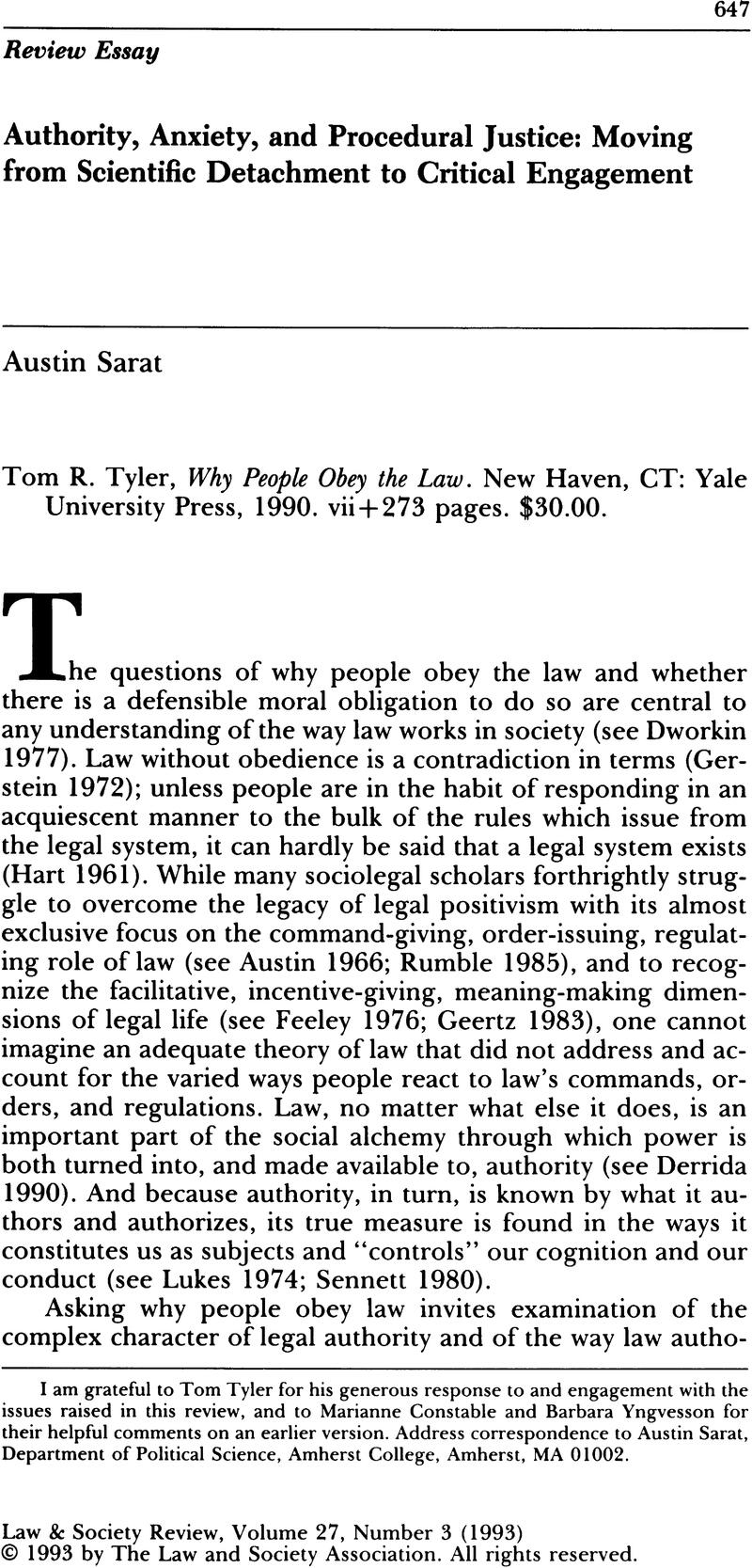Crossref Citations
This article has been cited by the following publications. This list is generated based on data provided by
Crossref.
He, Xin
2005.
Why Do They Not Comply with the Law? Illegality and Semi-Legality among Rural-Urban Migrant Entrepreneurs in Beijing.
Law & Society Review,
Vol. 39,
Issue. 3,
p.
527.
Berrey, Ellen
Hoffman, Steve G.
and
Nielsen, Laura Beth
2012.
Situated Justice: A Contextual Analysis of Fairness and Inequality in Employment Discrimination Litigation.
Law & Society Review,
Vol. 46,
Issue. 1,
p.
1.
Cherney, Adrian
and
Murphy, Kristina
2013.
Policing terrorism with procedural justice: The role of police legitimacy and law legitimacy.
Australian & New Zealand Journal of Criminology,
Vol. 46,
Issue. 3,
p.
403.
Vuolo, Mike
2014.
Incorporating consensus and conflict into the legitimacy of law.
Crime, Law and Social Change,
Vol. 62,
Issue. 2,
p.
155.
Rose, Mary R.
2015.
The Handbook of Law and Society.
p.
85.
Shamir, Julia
2015.
Studies in Law, Politics, and Society.
Vol. 66,
Issue. ,
p.
115.
Thacher, David
2015.
Institutions and Ideals: Philip Selznick’s Legacy for Organizational Studies.
Vol. 44,
Issue. ,
p.
317.
Hertogh, Marc
2015.
What moves Joe Driver? How perceptions of legitimacy shape regulatory compliance among Dutch traffic offenders.
International Journal of Law, Crime and Justice,
Vol. 43,
Issue. 2,
p.
214.
Jobard, Fabien
and
Kretschmann, Andrea
2020.
Recht in Bewegung.
Zeitschrift für Rechtssoziologie,
Vol. 39,
Issue. 2,
p.
149.
Kretschmann, Andrea
2021.
Legal Compliance: Founding Elements of a Conception Based on Cultural Theory.
European Journal of Sociology,
Vol. 62,
Issue. 1,
p.
105.
Ren, Ling
Luo, Fei
and
Nielson, Kyler
2022.
Racial/Ethnic Connection with Confidence in the Police: Equal Treatment Matters.
Canadian Journal of Criminology and Criminal Justice,
Vol. 64,
Issue. 3,
p.
49.
Cao, Liqun
2022.
Police Legitimacy in Ethnic–Racially and Economically Stratified Democracies.
Canadian Journal of Criminology and Criminal Justice,
Vol. 64,
Issue. 3,
p.
06.
Woodlock, John
2022.
Procedural justice for all? Legitimacy, just culture and legal anxiety in European civil aviation.
Law & Society Review,
Vol. 56,
Issue. 3,
p.
441.
Newburn, Tim
2022.
The inevitable fallibility of policing.
Policing and Society,
Vol. 32,
Issue. 3,
p.
434.





